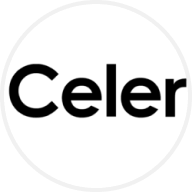Celer Network价格
(欧元)

了解Celer Network
免责声明
请参阅我们的 使用条款 和 风险警告,了解更多详情。通过使用第三方网站(“第三方网站”),您同意对第三方网站的任何使用均受第三方网站条款的约束和管辖。除非书面明确说明,否则欧易及其关联方(“OKX”)与第三方网站的所有者或运营商没有任何关联。您同意欧易对您使用第三方网站而产生的任何损失、损害和任何其他后果不承担任何责任。请注意,使用第三方网站可能会导致您的资产损失或贬值。本产品可能无法在所有司法管辖区提供或适用。
Celer Network 的价格表现
Celer Network 社交媒体动态


快捷导航

Celer Network 常见问题
深度了解Celer Network
Celer Network 是 Layer-2 解决方案 ,可以广泛应用于以太坊 以及 Polkadot 等区块链,为不同区块链上提供了快速、安全、低成本的区块链应用程序 ,CELR 是项目的原生代币。
project's 项目的核心架构依赖于三个元素:cOS (主要开发框架);cRoute,由多个链和层组成的完全去中心化路由系统,具有更高的操作能力;以及 cChannel,网络的底层,使生态系统内的交易能够顺利进行。作为一个真正的 Layer2 平台,Celer 的安全基于 Layer1 区块链。
Celer 生态系统的一个关键特性是 Layer2。它解决了 DeFi 最大的挑战,为用户提供方便的访问和显著降低的交易费用。还有一个名为 cBridge 的多链跨层资产桥,它允许在以太坊的第二层链内和跨层内以低成本进行即时、非信、任意对任意的价值转移。Celer 的开源平台,拥有一整套 sdk 和低成本优势,允许开发者快速构建和试验项目。
三个紧密耦合的组件构建了“经济生态”,如下所示:
- 状态守护网络 (SGN):用户可以在状态守护网络中加入 CELR 来执行某些治理操作。
- 流动性承诺证明 (PoLC):在流动性承诺证明中,可以使用 CELR 来维护流动性池,这是一个虚拟的挖掘过程。
- 流动性支持拍卖 (LiBA):它允许链下服务提供商通过众贷筹集流动性。
CELR 代币还可以用于支付链下服务的服务和交易费用。2019 年 7 月 7 日,Celer 网络推出了其阿尔法主网 Cygnus,这成为第一个通用状态信道网络。
该平台结合了状态通道和 Layer2 汇总集成以支持各种应用程序,如 DeFi (layer2.finance)、小额支付和区块链游戏。除了阿尔法主网,Celer 已经成功推出了 2018 年 10 月与 cWallet 合作的 Centauri 和 2019 年 2 月与 CelerX 合作的 Sirius 两个测试网。
CELR 价格及经济模型
CELR 代币的最大供应量为 100 亿枚。Celer 共计进行三轮融资:
- 2018 年 4 月,进行了一次天使轮,总供应量的 11.5% 以每代币约 0.0065 美元的价格出售。
- 2018 年 8 月,总供应量的 15.5% 以每代币 0.0150 美元的价格在私人销售中出售。
- 2019 年 3 月,6% 的代币供应通过币安平台出售,价格为 0.0067 美元。
CELR 经济模型是一个为平台提供安全性、流动性和平滑连接的股权系统。CELR 的价格自然取决于平台的表现以及 CELR 的价值。它的合作关系也影响了 CELR 的价值。
创始人团队
Celer 网络的团队包括董默、刘俊达、李小舟和梁庆凯。莫东获得了计算机科学博士学位,在创立 Celer Network 和 CelerX 之前,他曾在不同的公司担任技术职务。
elerX 的另一位联合创始人梁已经完成了机器学习和计算机网络的博士学位。Junda Liu 拥有计算机网络博士学位,在谷歌从事工程工作超过 6 年。
Celer 与 Polkadot、StarkWare、Automata 等知名企业建立了合作关系,与 Pantera、DHVC、Stable、BlockVC、Matrix、fenbuhi Capital 等建立了战略合作关系。
ESG 披露






